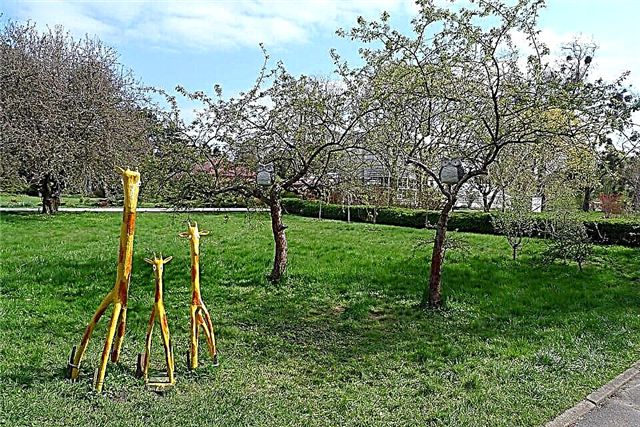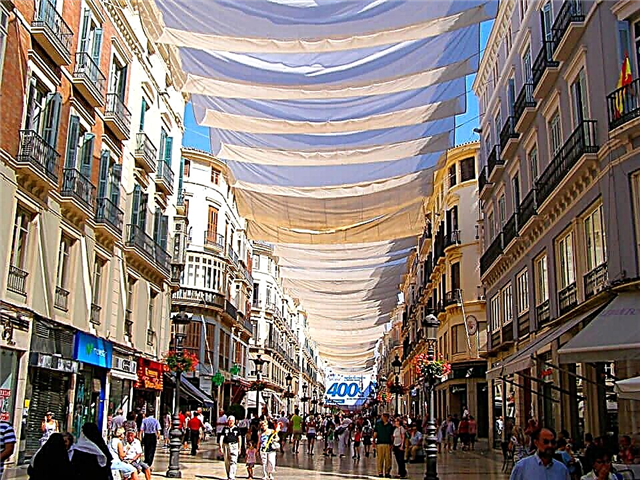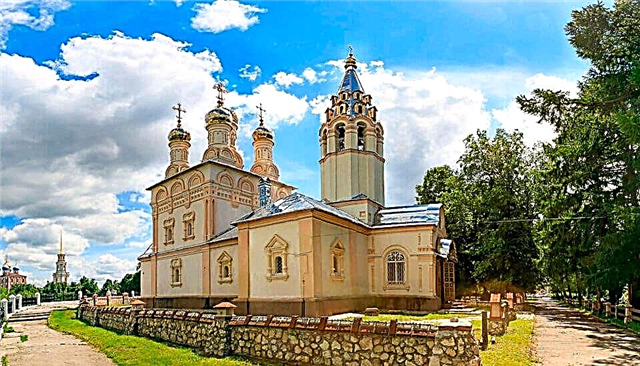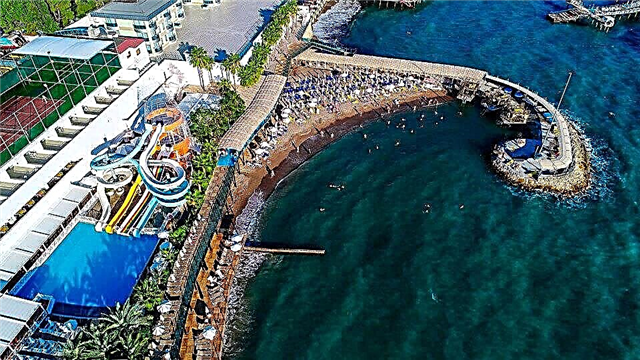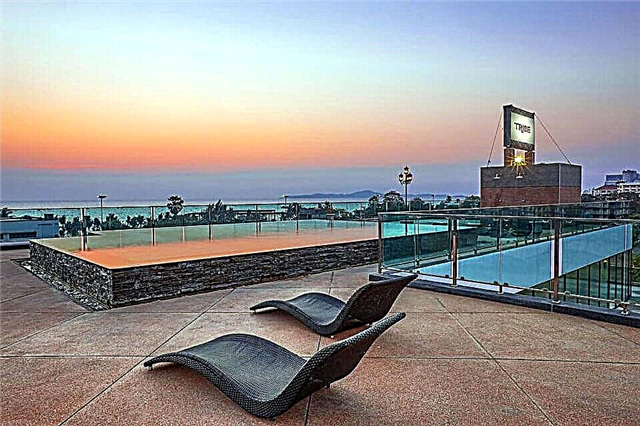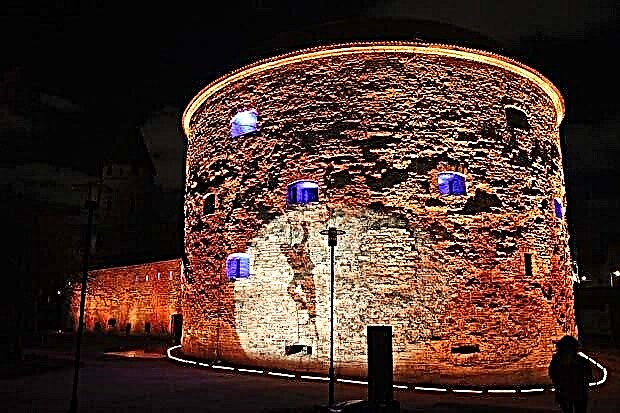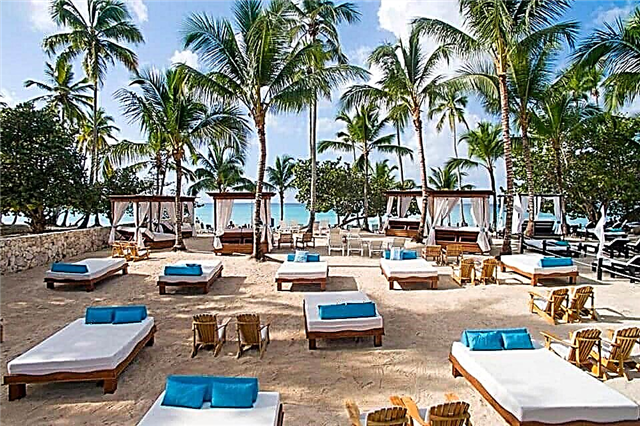Kislovodsk is a picturesque southern city in the Caucasus, founded in 1803 as a defensive fortress on the southern borders of the Russian Empire. Thanks to its enchanting nature, wonderful climate and healing mineral springs, since 1812 it began to develop as a summer balneological resort. Then the first baths and residential buildings of wealthy Russians were built. The city has become a favorite vacation spot for the Russian intelligentsia. It keeps the memory of the stay of the hero of the war of 1812, General Nikolai Raevsky, and the poet Alexander Pushkin, poet Mikhail Lermontov, singer Fyodor Chaliapin and other prominent Russians who visited him. Today, the historical and cultural sights of Kislovodsk have been preserved or restored almost unchanged, excursions around which are pleasant to combine with health improvement in sanatoriums and boarding houses.
Narzan gallery

One of the main business cards of Kislovodsk is the picturesque Gothic building of the 19th century - the Narzan Gallery, built in the shape of a key. Starting with a round section with narzan baths, it continues with an extended gallery with two pavilions adjacent to it on the right and left. Between them is the main treasure of the gallery - a deep well with a narzan, covered with a glass dome. The main building of the narzan baths, built in an oriental style, with turrets on the pediments, rich stucco cornices and platbands, a colored facade ornamentation and an elegant arched balcony, is fascinating.
Inside the gallery, thanks to the marble walls and floor, it is always cool even in hot summers. The gallery has 16 pump rooms with 3 types of narzan of different temperatures: common, sulfate and dolomite. The Narzan gallery is surrounded by a green park, where it is pleasant to sit on a bench with a glass of healing water and admire the streams of the fountain shimmering in the sun.
Lermontov area

It is impossible to pass by the Lermontov area - the place where the poet used to be. It is located next to the entrance to the Spa Park opposite the Colonnade. Your attention will be attracted by an architectural ensemble standing on a small hill from a site with two three-flight staircases and a bust of Mikhail Lermontov in a wall niche. The lines of the poet from the poem "Caucasus" are carved under the bas-relief. At the bottom of the site, you will be interested in a mysterious grotto with the figure of a Demon imprisoned in a cage.
At night, the Demon's sad eyes, according to the sculptor's idea, are illuminated with red light, giving the sculpture an ominous look. A platform with stairs was built in 1825-1826 from yellow sandstone. Lermontov himself ran up these steps, being in exile in the Caucasus. " It is noteworthy that the bust of Lermontov was installed in the middle of the 20th century, and the sculpture of the Demon in 1970. During the recent restoration, the Lermontov area was decorated with a portico and columns, expressing the entire ensemble in the same style.
Colonnade

Not far from the Narzan Gallery and Kurortny Boulevard, you will see the Colonnade - a snow-white neoclassical rotunda, preceding the entrance to the Kurortny Park. Built in 1912 to commemorate the centenary of the victory over Napoleon's troops, it has become a symbol of the city, featured on numerous souvenirs. The grace of the building with columns of the Corinthian order, supporting a flat roof, fenced with a balustrade with figured posts, is fascinating.
Attention is drawn to the upper tier, with an elegant arcade topped with turrets on the sides. If we compare the current view of the colonnade with the original one that has come down to us from the photograph, then for 100 years it has practically remained unchanged, only a fountain has been added in the center of a semicircular square. In the evenings, the Colonnade and the fountain look mesmerizing in multi-colored illumination, gathering lovers and guests of the city to admire the fabulous magic.
Cascade staircase

The cascade staircase, built in the 30s of the last century, is almost 100 years old. It was built to climb to the sanatorium located on the Georgievsky plateau of the National Park. The unique architecture of the cascading staircase with fountains and ponds immediately became a visiting card of Kislovodsk. It is presented in two parts with 170 steps, where the middle of the ascent is divided by a small terrace with an observation deck decorated with columns. At the bottom of the staircase there are 2 wide flights, separated by a wide straight strip, where all the tiers are highlighted by fountains.
From the tiled terrace, further ascent is presented in the form of a three-flight wide staircase in the center and narrow staircases on the sides. The central part is separated from the flights of stairs by tiers with semicircular reservoirs. The culmination of this miracle of architectural thought was the colonnade, to which 2 semicircular staircases lead, embracing the fountain between them. You get to the observation deck, which opens up an amazing panorama of the city.
Cable car

The launch of the Ropeway, connecting the Old Park with the Gorny Park and opening up an amazing panorama of the Caucasus Mountains and the city, took place in the spring of 1973. The cable car with a length of 1743 m consists of one span with simultaneously two plying cabins, accommodating 25 guests each. They follow from the lower station called "Temple of Air" to the upper station - "Olympic Complex", located on the observation deck of the Maloye Sedlo Mountain. The entire journey from bottom to top takes no more than 7 minutes.
Rising to a height of 250 m above the ground, you embrace the boundless scale and beauty of the National Park covered with pine, fir and spruce. And among the lush southern greenery, one after another, magical landscapes with the Valley of Roses, the Temple of Air and the Blue Stones open up. Getting off at the top station, enjoying the landscape views, you can extend your pleasure by walking down a specially equipped trail, breathing in the healing aromas of pine needles.
Mountain Small Saddle

Mount Small Saddle - being a colorful natural landmark, it serves as a magnificent observation deck. It offers stunning views of the resort town and its surroundings - the Podkumka valley and the Bermamyt plateau with bizarre pictures of gorges and greenery of its beams. The mountain rushed upwards at 1325 above sea level and 500 m above the level of the central square. From the site of the Small Saddle, the path leading to the two-humped mountain peak called the Big Saddle is perfectly visible.
The Maloye Sadlo mountain region is part of the Kislovodsk National Park, with an abundance of local and exotic tree species, diverse mountain vegetation and numerous species of fauna. Clean and salubrious coniferous air invigorates tourists taking health-improving walks along specially laid routes. Climbing to the top of the mountain is made by tourists all year round, because at any time of the year nature gives an unprecedented feeling of beauty and fullness of life.
Mount Great Saddle

The elder sister of the Maloye Saddle Mountain is called the Big Saddle Mountain - the highest mountain peak of the Dzhinal mountain range, 1408 m above sea level. This name was given to the mountain peak due to its concave shape, which evokes associations with a saddle. The slopes of the mountain are covered with blooming forbs, where you can often find grazing cows and horses, and in the sky high soaring eagles looking out for prey. Several types of shrubs and trees surround small clearings with abundant vegetation.
From the height of the Big Saddle mountain, one can gaze at the landscapes of the Caucasian Mineral Waters with the majestic Mount Elbrus, wrapped in clouds on the horizon, from the southern side.Standing on the northern side of the peak in clear sunny weather, you can see the outlines of Pyatigorsk and the mountains Beshtau and Mashuk towering next to it. Those wishing to climb should take into account that it is colder and windier on the mountain than in the city, so you need to dress warmer.
National Park "Kislovodsky"

Acquaintance with the National Park "Kislovodsky" begins from the main entrance - a snow-white semicircular two-tier colonnade. On the other side, the entrance to the National Park is a unique cascading staircase with columns and picturesque pools with mini-waterfalls on both sides. The territory of the park is divided into Lower, Middle and Upper parks.
The lower park will greet you with the "Lermontov platform" with a stone staircase and a sculptural composition, including a stele with a bas-relief of the poet. Then you will see a unique gazebo - "Glass Stream" and "Mirror Pond" next to it. Further, the construction of the Narzan Gallery, the work of the fountains, the beauty of the flower clock and the grotto "Corner of Kisses" will delight the eye. Walking along the "Ladies' Caprice" bridge, find yourself near the "Crystal Spring". It remains to look at the monument to Pushkin and visit the Horseshoe Museum.
On the square of Sredny Park, the "Red stones" are surprising - the rocks of their red-brown sandstone with a sculpture of an eagle sitting on top, tormenting a snake. The main place in the middle park is occupied by the Valley of Roses, striking with its iridescent beauty and heady aroma. Here are also interesting "Temple of Air", a cascade staircase and an observation deck that opens a panorama of the park with alleys and glades, the cliffs "Gray stones".
The upper park is famous for the Red Sun Mountain, where the cable car terminus and the monument to Mikhail Lermontov are located. Near the monument there are unique Blue Stones, passing between which they get on the Kosygin trail, leading to a natural grotto with rock carvings. In the upper park it is interesting to climb the Maloe Sedlo mountain, sit in the gazebo of the seven winds and visit the "Master of the Mountains".
Valley of roses

The most picturesque attraction of the resort park is the Rose Valley, which is visited by numerous tourists, spa guests and townspeople. Reminiscent of a flower carpet, it is especially beautiful during the mass flowering season of all 35 varieties of roses, planted in different areas on an area of 2 hectares. The main place is given to the central rose garden, divided into dozens of flower beds, alternating in a checkerboard pattern with green lawns.
The highlight of the valley was a flower bed in the form of a huge rose, formed by low ornamental bushes on a snow-white background of granite chips. A rose garden in the shape of a circle, called "The Sun" with pedestrian paths emanating from it, looks beautiful. Admiring the beauty of roses, it will be a pleasure to walk along them by the main park alley, bordered by two rows of thujas. In the depths of the alley, there is a 15-meter stone crocodile, a sculpture chosen by tourists for selfies.
Mirror Pond and Glass Stream

The lower park is decorated with two picturesque sights - the Glass Stream and the Mirror Pond, which make up an integral picturesque ensemble with a small pond with a mirror-like surface and a rotunda with a stylized waterfall. They harmoniously fit into the surrounding landscape of the old part of the park near the left bank of the Olkhovka River. The birth of the Mirror Pond took place in 1897, when a pool was cut down in the limestone surface of the shore and an original graceful gazebo was built next to it, illuminated in the evenings.
The pond is filled with crystal clear fresh water from a spring that maintains the same temperature of 7 degrees throughout the year. The shore according to the parameters of the pond is lined with stone-travertine. A glass stream was called two transparent streams flowing from the gazebo through a special tray, forming small man-made waterfalls. The beautiful main alley of the Lower Park with the name "Promenade" leads to the Mirror Pond.
Mountain Red Sun

Mountain Red Solnyshko is a natural landmark of the Upper Kurortny Park, rises 1042 m above sea level. You can get to its top by cable car or by two terrenkurs, which originate below the Narzan Gallery. The mountain conquers with a rocky platform that breaks off from the southern and western sides with bizarre rocky ledges that look like fantastic monsters. Coming out of the cable car, you will see a rotunda gazebo from which a stunning view of the entire Kislovodsk Park opens.
The mountain is also decorated with the cafe "Red Sun", notable for its semicircular entrance with columns and topped with a dome. Here you can drink aromatic herbal tea, coffee and taste Caucasian cuisine. There are several caves on the southern slope of the mountain. From the Red Sun there are hiking trails up to the mountains Maloye Sedlo and Bolshoye Sedlo and a path diverging into two mountain-forest serpentine strips to the lower park.
Monument to M. Yu. Lermontov
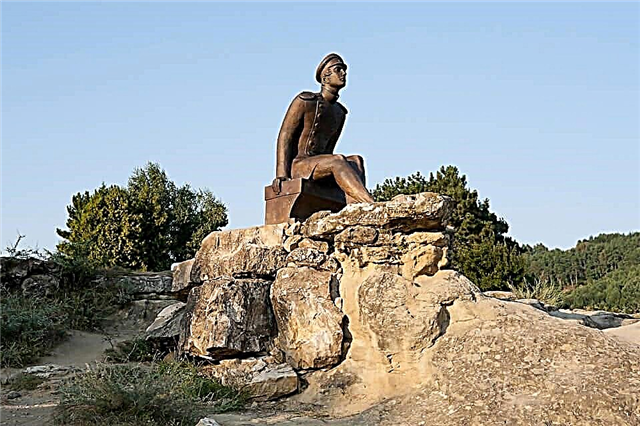
Before leaving the summit of the Red Sun, tourists always come to the monument to Mikhail Lermontov, standing a little further from the cable car station. It was installed on a raised platform of the mountain at the beginning of our century, but has already managed to fall in love with numerous tourists. A bronze poet in the uniform of an officer sits on a low pedestal set on a massive flat stone, pensively looking into the distance. His gaze is directed to the south, where a picture of the majestic two-headed Elbrus appears over the horizon.
The size of the sculpture is 2.5 m, which is slightly more than the poet's actual size. Lermontov's knees are rubbed to shine by tourists taking pictures sitting on them. Before the monument was finally registered at the top of the Red Sun, he visited the Lower Park near the Glass Lake. There Lermontov looked unnatural, and in 2017 he was returned to the top of the Red Sun, where the poet looks towards Elbrus, which is often mentioned in his poems.
Blue stones

Sandstone rocks located at an altitude of 1150 m were named blue stones, by analogy with the Red stones of the Lower Park. But if the color of Red stones is natural, then in reality stones of ordinary color look blue in gloomy light or when they are enveloped in haze. From the effects of wind and water, in addition to the unreal blue color, they acquired bizarre shapes. Boulders piled on top of each other and formed natural stone arches. Not far from the Blue Stones, there is a gazebo, from which you can see the panorama of the entire park and the resort town.
Climbing the Blue Stones, you can see the rib beam and see the five-pointed star carved on the rock by the Austrian communists with the inscription in German: "To the heroes who fell in the February battle." You can see this natural landmark by making an ascent along special trails from the entrance to the National Park to Mount Bolshoy Saddle or by taking a cable car to the final stop "Olympic Complex".
Temple of air

In addition to the healing springs of Kislovodsk, the air of the resort, filled with pine aromas, promotes health. A kind of monument to the unique air was erected here in 1914 on the square of the Upper Park, calling it the Temple of Air. Over time, the building fell into disrepair, so it was revived in our century. Its airiness is conveyed by the harmonious architecture of the Temple of Air. It is created by a classic semi-rotunda with west-facing windows. The flat roof is supported by six columns, covering a semicircular platform.
You can get to it along the wide front staircase. The main building is adjoined on both sides by rooms decorated with arched windows. The decor of the facades with stucco molding of floral wreaths decorated with ribbons is interesting. The ornamental marble floor of the Temple of Air, which looks like an antique temple, is fascinating.As if the continuation of the temple, there is a gazebo not far away, emitting, thanks to a special design, melodious sounds of the wind.
The estate of A.I. Tvalchrelidze

A beautiful yellow brick building with towers and skates on the roof, towering on the top of a hill, is the most famous private villa in the city, built in 1905 by the city dweller A.I. Tvalcheridze. For its similarity with the architecture of castles, the mansion made of yellow sandstone was nicknamed "the golden castle". The estate is a three-storey Art Nouveau villa with an asymmetrical layout, located on a wide terrace with a balustrade and retaining walls.
The building connected several buildings of different shapes, distinguished by the individual shape of the roof, windows and different design of the facades. An abundance of artfully decorated staircases, balconies, mezzanines and attics give the complex an original look. Historians suggest that in 1918, the ballerina of the Mariinsky Theater Matilda Kshesinskaya lived in the villa, who left Petrograd, engulfed in revolutionary events. In addition to it, the walls of the "golden castle" keep the memory of Princess Vyrubova, artist Nikolai Yaroshenko, singer Fyodor Chaliapin.
Chaliapin's dacha

Chaliapin's dacha is called a Art Nouveau mansion located on a hill surrounded by pine and fir trees, dating back to 1903. The famous singer Fyodor Chaliapin filmed it for the family's summer vacation. The cottage, built of white stone with a high base, is distinguished by colored stained-glass windows decorated with wood carvings and original turrets. In the design of the facades, tin decoration details and artistic stucco molding were also used. The balcony-veranda, from which the beautiful Kislovodsk landscape opens up, is decorated with wood.
The building, which is associated with a fairytale tower, has become today the house-museum "Chaliapin's Dacha". Once inside, you will see wall paintings by the Russian artist K. Korovin, the ceiling of the living room with multi-colored stucco moldings, a fireplace designed by N. Roerich and the furnishings of rooms with antique furniture decorated with carvings. The personal belongings of the singer and his relatives are kept in the museum, the annual "Chaliapin Seasons" are held.
Church of Panteleimon the Healer

In the historical area of Rebrova Balka, on a hill, there is a church of the Holy Great Martyr and Healer Panteleimon, recreated according to the drawings and photographs of the temple dating from 1905, destroyed in 1965. Starting in 2002, the reconstruction of the church in the Old Russian style, relied on old plans and photographs. Upon completion of the construction, a 17-meter-high, one-altar, handsome red-brick temple with figured masonry and white trim on the facades, has grown. Eight chapters of the church end with golden onions of various sizes, crowned with crosses.
The largest dome rises above the central octagonal drum with windows. Along the perimeter, the side bulbs are surrounded by decorative kokoshniks, which give the temple an elegant look. The entrance on the western facade is beautifully decorated with a figured porch, and the side entrances are made in the form of arches. In the temple there are shrines - particles of the relics of the Holy Healer Panteleimon and an ancient icon of Saints Cosmas and Damian.
Dolphinarium

This is one of the most beloved vacation spots for townspeople and holidaymakers. Its opening took place in 2008. Today, it demonstrates show programs at the highest artistic level with the participation of talented artists. You will certainly be surprised and enjoy the performances of the Black Sea bottlenose dolphins, sea lions and seals, walruses and sea lions. The highlight of the program was the beluga whales. A program featuring these cute and funny sea animals takes place both in the water and on the shore.
It is impossible without delight to look at the amazing tricks of dolphins, amazing with their synchronized jumps, masterly juggling with a ball and drawing pictures, which, at the end of the performance, are put up for auction among the audience. Other maritime artists amaze with their artistic abilities to sing, dance, solve logic puzzles. After an unusual concert, you can take pictures with the artists you like.
Historical and Local Lore Museum "Fortress"

The Kislovodsk fortress was built from 1803 to the middle of the 19th century and has been preserved to the fullest extent in good condition. It was visited by the famous Russian poets Pushkin and Lermontov. The entrance to the fortress is represented by a beautiful gate with an arched opening, decorative machicules and carved consoles on the top. The fortress gates have become a symbol of the city and are depicted on its coat of arms. Near the entrance to the fortress, a massive stone sign with a sign informing that a city was founded on this place attracts attention.
The fortress wall, built in the same style as the gate, features multiple loopholes. The powerful building of the round tower is impressive, as well as weapons workshops, barracks and an arsenal, transferring in the imagination to the distant 19th century. The fortress houses a local history museum with archaeological, historical, ethnographic expositions, a collection of local porcelain and numerous thematic exhibitions.
Lermontovsky waterfall

The southern outskirts, where the Olkhovka river flows, is notable for the picturesque Lermontovsky waterfall, thus where "Pechorin gave his horse a drink" in the novel "A Hero of Our Time" and was mentioned in the story "Princess Mary". According to legends and some testimonies of the poet's contemporaries, Lermontov loved to visit this place, admiring the water stream flowing down into the river from above. The waterfall, named after the poet, does not exceed 3 meters in height, but it looks very picturesque when, in free fall, its jets fly down from a flat platform, scattering fireworks of spray shining in the sun.
If you want to admire a natural landmark, it is best to do it from a rocky area or standing near a flowing stream of water. Near the Lermontovsky waterfall it is interesting to look into the domed caves - unique creations of nature. You can get to the Lermontovsky waterfall from the center along Prudnaya street or take a city bus.
Singing fountain

Opened in July 2016, delighting people since then with its enchanting beauty. An inspired creation of Italian masters, the fountain harmoniously blended into the surrounding space of the city square. In the bowl of the fountain with a diameter of 21 m, the jets fan out in a dance from the center, rising to a height of 15 m. To the music, they change their direction, surprising with a varied tempo and speed of the dance.
The fountain is indescribably enchanting when the city is covered with twilight. Its jets delight with fabulous illumination. The highlight of the singing fountain's program was the flames bursting out of the water, creating a mysterious atmosphere. Dances of water jets are accompanied by romantic classics, instrumental melodies in different genres, compositions by popular foreign and domestic performers. The Singing Fountain is open daily from 11.00 to 00.00 during warm hours of the day.
Mountain Ring

An amazing natural landmark - Mount Ring at an altitude of 900 m was created for centuries by nature itself: winds, rains, temperature changes. It was these skilled craftsmen who cut an 8-meter arch in the Borgustan ridge in the northern part of Kislovodsk, calling it the Ring Mountain. The approach to it is possible only from one side, and the other three sides hang over the cliffs. Near the legendary Ring in the rock, several grottoes have formed, distinguished by bizarre shapes.
Such a miracle created by nature contributed to the fact that the locals considered the Ring mountain sacred and for centuries passed on the legends of love and courage associated with it. Thanks to legends, it is believed today that after passing through the mountain ring and drinking from a water source, you will gain strength of mind and body.Entering the Ring, enjoy the amazing panorama of the mountain river Podkumok with the tributary Alikonovka, where the waters of the Honey Waterfalls rush and you can see the mysterious Castle of Treachery and Love.
St. Nicholas Cathedral

The construction of the main temple of the city - St. Nicholas Cathedral dates back to 1999. The basis of its architectural appearance was the former church, which was blown up in 1936. The building of the cathedral is 54 m high and is built in the shape of a cross with three side apses. It is crowned with 5 helmet-shaped domes on light drums. The temple, accommodating 3,500 parishioners, creates a sense of lightness thanks to the arched facades, semicircular windows and horizontal arrangement of architectural details that visually propel the cathedral upward.
In the interior you can admire the richly painted walls and ceilings, lined with granite slabs of the floor. The altar is decorated with golden openwork lattices. The four-tiered Main Iconostasis is striking with gilded decorative details. The relic of St. Nicholas Cathedral is the old icon of St. Nicholas the Wonderworker, which miraculously survived after the destruction of the old church, in which in the old days the voices of the greatest Russian singers M. Sobinov and F. Chaliapin sounded.
Bas-relief Master of the mountains

In the park not far from the monument to Lermontov on the Yasnoe Solnyshko Mountain, at a sharp turn there is a sign: “Hiking trail. To the natural grottoes and the master of the mountains ”. After walking about 100 m along a little-traveled path, you get to the mysterious grottoes and caves, where, according to legend, their guardian - the mysterious and demonic Master of the mountains - lives in the grotto of the Leaky Rocks. Its bas-relief face, about 1.5 m high, protrudes from the cliff wall, as if it forbids going inside.
From moving along the grotto, it seems that from different angles the gaze of the Master of the Mountains changes, becoming either sad, sometimes ominous, or attentive. It is known that the menacing looking face was carved into the rock in the 70s of the last century by an unknown amateur sculptor. For a long time this rock figure was called the Demon by analogy with Lermontov's lines "a sad demon, the spirit of exile flew over the sinful earth." However, at the tourist stand in the Kurortny Park and all signs, he is listed as "Master of the Mountains".
Museum of A.I. Solzhenitsyn

Heading towards the center from the Kislovodsk railway station, it is impossible to pass without stopping near the country house of Maria Gorina, which stands out on the mountain slope. Similar to a small Orthodox church with a bell tower and an entrance to the east, the mansion conquers with a facade with wide window openings with pointed arches, a tower dome decorated with openwork carvings. The mansion of Gorina, who was the writer's maternal aunt, is the only house in the city associated with the name of Solzhenitsyn. Here he spent his childhood and adolescence.
Since 2008, the mansion has become part of the State Literary Museum. The permanent exhibition contains documents about the writer's childhood and adolescence, the tragic events of the war, imprisonment and exile. Here are editions of his works that have received recognition in the world, video recordings of the writer's reading of his works, interviews and fragments of documentaries and films based on the works of Solzhenitsyn.
Monument to military doctors

Kislovodsk is the only city in the Caucasus that was awarded the Order of the Patriotic War of the 1st degree. Much credit for this belongs to the doctors of the Kislovodsk hospitals, who returned to service more than 600 thousand soldiers of the Red Army. When the Nazis entered the city, the medical staff managed to evacuate some of the treated soldiers, some were dismantled to their homes, risking their lives, and the rest were placed on the mountain in the Semashko sanatorium, hoisting a white sheet with a red cross over it.
Their civil feat is immortalized by the only monument to military doctors in our country. It is installed on the central alley of Kurortny Boulevard, not far from the Main Narzan Baths. The monument stands on a low granite pedestal. It is a huge concrete arch with a cross on the wall, in front of which a fragile woman stands inside the arch, symbolizing the bravery and dedication of the sisters of mercy who saved the lives of soldiers during the war. There are always fresh flowers in front of the monument.
Castle of deceit and love

It is customary to call a bizarre cliff in the spur of the Rocky Range on the western outskirts of Kislovodsk as a castle of treachery and love. The natural monument arose from the destruction of rocks from dolomite limestone under the influence of winds, rainstorms and natural disasters. The view of the ridge of uneven steep cliffs, formed at an altitude of 950 meters above sea level, resembles a dilapidated fortress wall with towers. If you come closer to the rocks, you can see on their surface images with the outlines of sad human faces.
According to local legend, they are attributed to two lovers who jumped down from a cliff because of the ban on the wedding by the girl's father. Not only bizarre cliffs attract tourists here. A hotel and restaurant complex stylized as an old castle is also called the castle of deceit and love. From its territory, amazing views of the Alikonovsky gorge open. On the way to the Castle of Treachery and Love, a narzan spring gushes from a well 260 m deep.
Honey waterfalls

Not far from the Castle of Insidiousness, there is another natural wonder hidden among the Caucasus Mountains - Honey Falls. 5 water cascades of various shapes, overthrown from a height, amaze with the power and beauty of streams of water sparkling under the rays of the sun. Each of their waterfalls has its own name. Pearl is the most picturesque and powerful. Falling only from a six-meter height of an openwork cascade, it gushes with splashes to a height of 10-12 meters. The waterfall with the name "Maiden's Braids" intertwines with its jets behind a huge boulder.
The sound of the "Devil's Mill" waterfall, rushing in a seething stream from the cliff, drowns out everything around with a strong volume at a great distance. The mighty Big Honey Falls, flying down from a height of 18 meters, is recognized as the main one in the family of honey waterfalls. And the landscape is completed by the Zmeyka waterfall, flowing like a stream over a massive boulder. A breathtaking view of the surrounding nature and honey aromas of blooming forbs opens from the bridge near the Big Waterfall.
Colonel Mistrov's house

Where Kurortny Boulevard begins, there is a remarkable two-storey palace-like building built in Baroque architecture. Its construction by Colonel Mistrov on an empty city site dates back to 1878. The house was built as a hotel with a column gallery for 12 furnished rooms for those who come for treatment with mineral waters. Surgeon Pavlov-Silvansky became the homeowner who made changes to the architecture of the building, transforming the column gallery into rooms and opening a private hospital in the house. During the years of Soviet power, the house served as a communal apartment.
In our time, it has been rebuilt, partially retaining the Baroque style. Its creamy white stucco façade is an eye-catcher. Above the entrance to the building, there is a small graceful balcony, and two sculpted lions sit like guards at the door. Today, a jewelry store is located in Mistrov's house, where you can enter and inspect it from the inside.
October baths

The October baths are called the balneological hospital - one of the most respected in the resort. It was built in the historical heart of the resort town in the 1920s on Kurortny Boulevard. The building of the October Baths is surrounded by a bunch of attractions - the Narzan Gallery, the Main Narzan Baths, the Colonnade. Close to it you can walk to the entrance to the famous National Park.
In terms of architecture, the constructivist-style building, which was being built for the 10th anniversary of the October Revolution, looks contrasting among the old buildings surrounding it.In its construction, several cubic fragments have been combined, there are no architectural excesses and decor. The only architectural decoration was the arch of the central entrance, which already in our time was decorated with high reliefs depicting a line of people following each other. Above the main case, a massive cube-shaped clock attracts attention.

